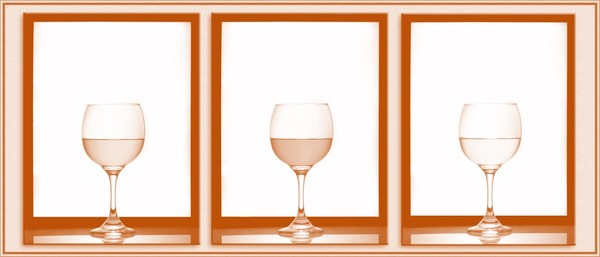
Lots of people are asking about orange wine. First of all: what is it? Despite the name, no actual oranges were harmed during the making of this wine. It’s called orange – or amber – wine because of its colour, ranging from pale amber to full-on Irn-Bru orange. The grapes used are white grapes, but the colour comes from the skins. If you are making white wine, you typically crush and press the grapes to extract the juice, and then ferment it. With orange wine, the grape skins are not removed but stay in contact with the juice for days or even months (as is done for red wines). It’s this skin contact that gives orange wines their colour, flavours and texture.
What does it taste like?
Orange wines typically have flavours of dried fruits (especially dried citrus), flowers, spices and nuts. For the range of orange wines available in the UK, listed below, flavours include: citrus, orange peel, citrus zest, stone fruit, tropical fruit, mango, tangerine, grapefruit, quince, pear, peach, candied fruits, dried apricot, white flowers, blossom, honey, nuts, spice, white pepper, white tea and vanilla.
When I first tasted orange wine, it was the tannins that threw me. Tannins come from the grape skins, and give many red wines their structure and ability to age in the bottle. Tannins are also found in tea, and can taste harsh or bitter. In orange wine, they provide some grippiness and texture. If you are not a tannin fan, try orange wine with food (especially protein) you will find the tannins soften and don’t jar.
Is orange wine nice?
Well, that depends on what you are looking for. Orange wine can be a bright, zesty, complex aperitif – but it really comes into its own as a wine with food. Pair it with grilled or fried fish, chicken or pork, roasted vegetables, hard cheeses, Indian curries, spicy foods, nuts, charcuterie… so many things! This versatility is hard to beat.
Where is it made?
Orange wine has been produced for thousands of years in Georgia (the country, rather than the US swing state). Then for the last few hundred years, the beautiful and rugged area on the border of Slovenia and Friuli-Venezia-Giulia in Italy has been quietly making orange wine, including in Georgian qvevris or amphorae.
Friuli pioneers such as Joško Gravner and Stanko Radikon championed the use of local varieties - especially one called Ribolla Gialla - and long ageing for 2–6 years in large barrels, and what is often called ‘natural’ winemaking: using ambient yeasts rather than cultured yeasts, no temperature control, no fining or filtration and low or no added sulphur dioxide.
Why is it so popular?
Orange wine has definitely had a London hipster following in wine bars and independent wine shops for a while, but its versatility as a wine for pairing with food has resulted in a growing presence on restaurant wine lists. Olly Smith (of Saturday Kitchen and Three Wine Men) did a podcast on orange wine at the end of the summer. Apparently, 6th October was National Orange Wine Day. I’m sure there was an uptick in sales around Halloween! And UK supermarkets are stocking it. So it is having a bit of a moment...
Where can I find it (in the UK)?
The Wine Society, Majestic and most supermarkets now stock at least one orange wine.

.jpg)
.jpg)